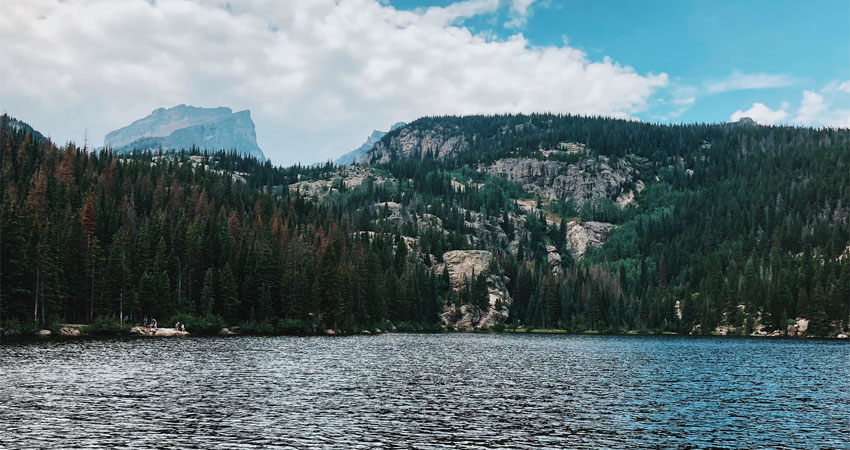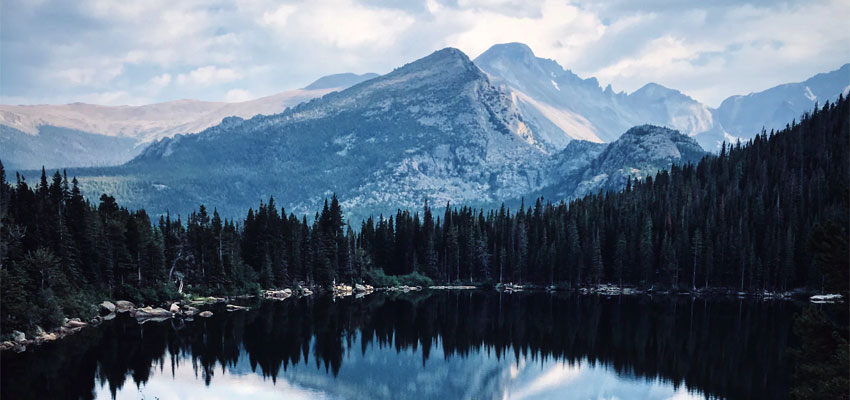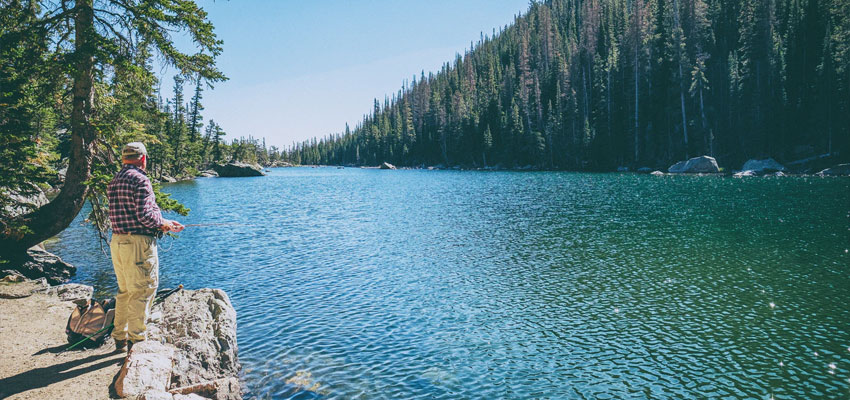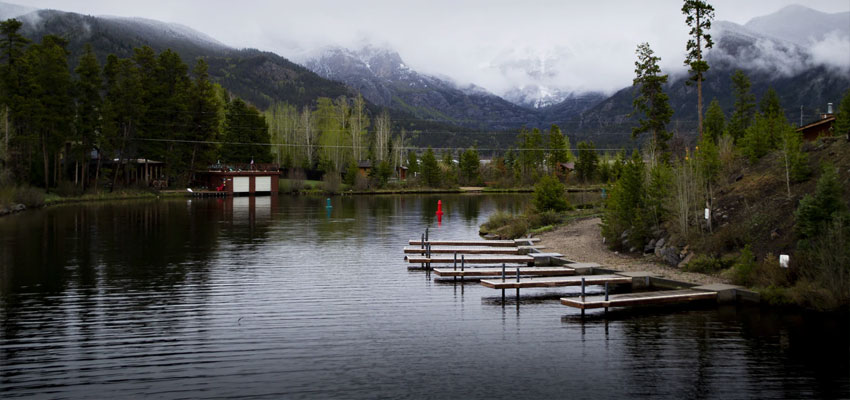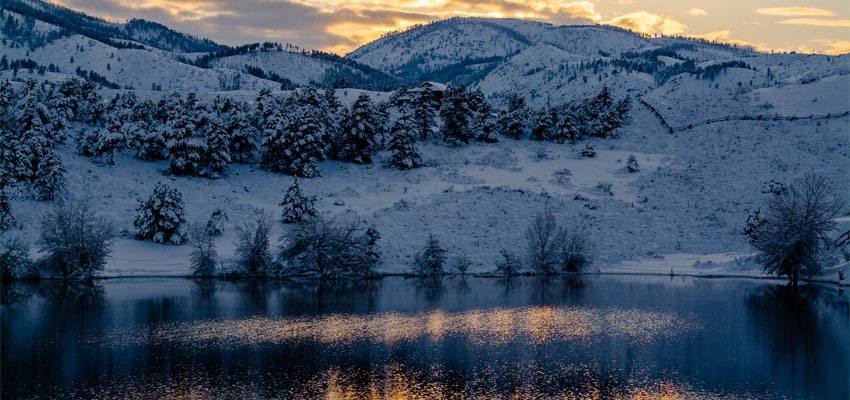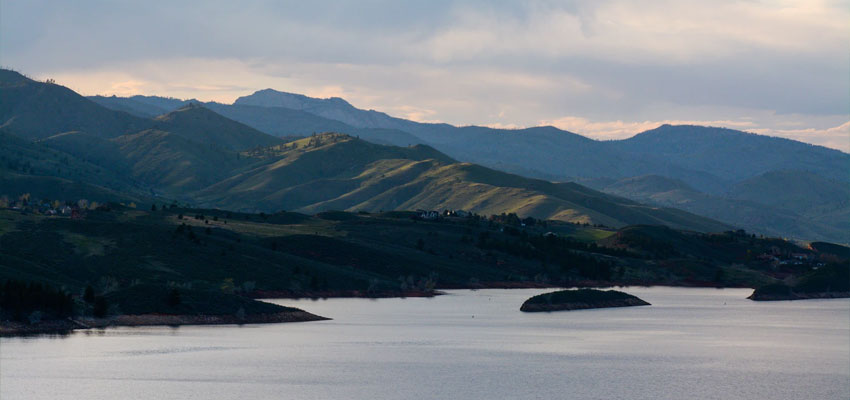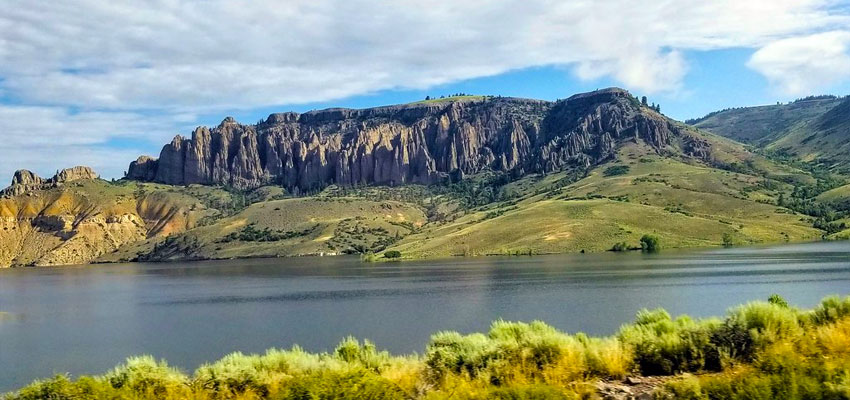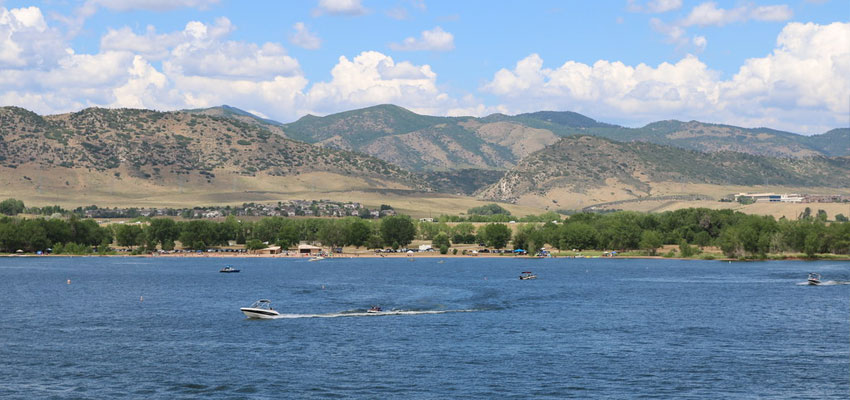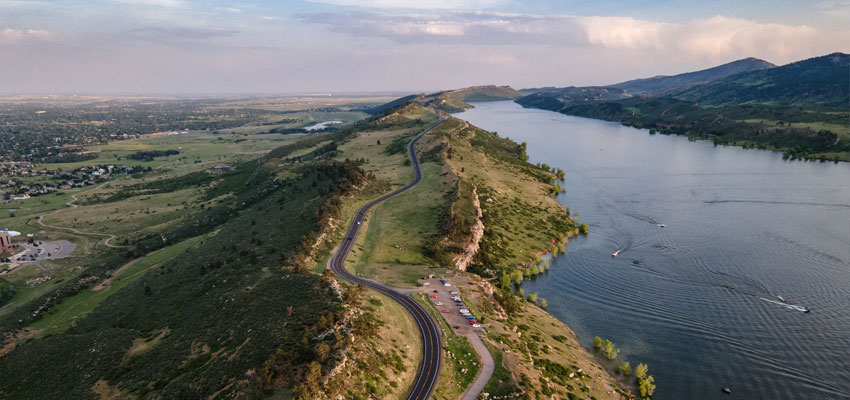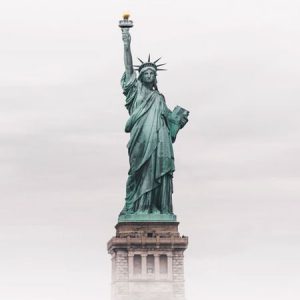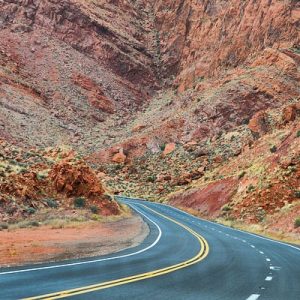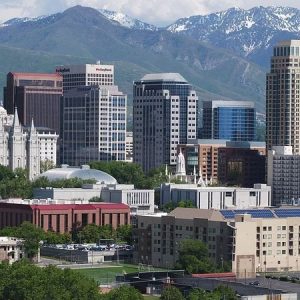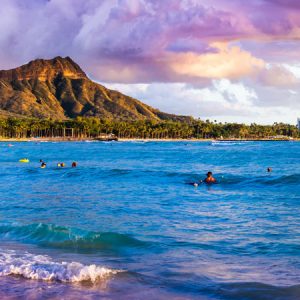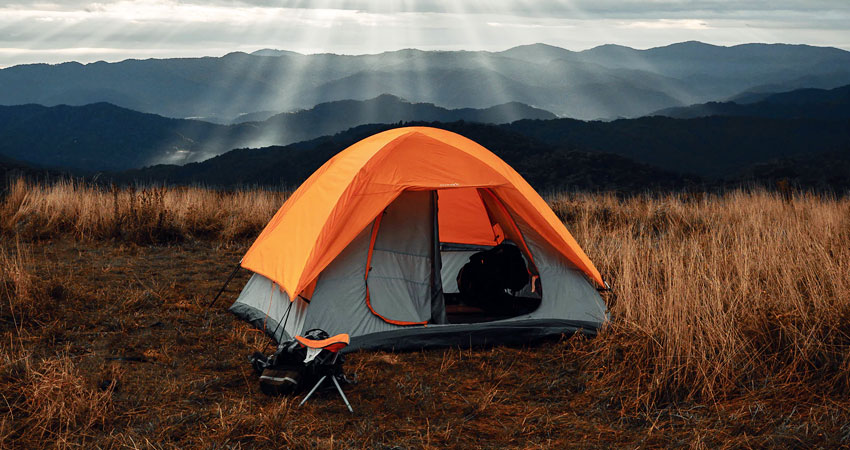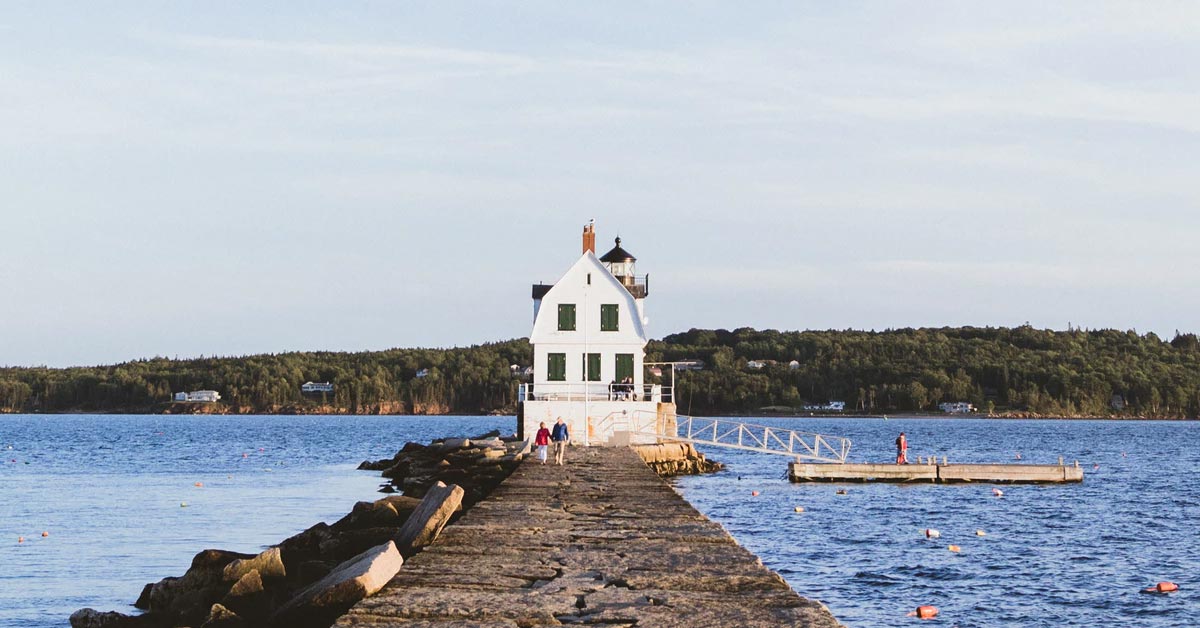When most people think about Colorado, they automatically think of vast mountain landscapes. They’re not wrong, but aside from mountains, Colorado has plenty of lakes and reservoirs. In fact, there are more than 1,500 publicly owned lakes in Colorado with a surface area of 10 acres or more.
Colorado has some of the most varied landscapes in the country, if not the world. Mountains, grasslands, valleys, meadows, forests, sand dunes, red rocks, rivers, streams, and lakes can all be found in this state, interspersed with rural towns and urban cities.
Whether you’re into boating, fishing, or just hanging out on a lake shore and soaking up all the beauty that nature has to offer, there’s a Colorado lake just for you!
Let’s go on a virtual journey of the best lakes in Colorado and be inspired to plan your next lakeside holiday!
Lakes In Rocky Mountain National Park
With majestic mountains, fields of wildflowers, lush forests, various wildlife, over 350 trails, and 147 lakes, Rocky Mountain National Park is one of the most popular and most visited national parks in the country.
Located between the towns of Estes Park and Grand Lake, the park covers 415 square miles. It’ll probably take you a few days or a few visits to be able to explore the whole park.
Summer is a popular time to visit this park, as this is when temperatures are warm enough to be able to walk around and explore comfortably.
However, visiting this park in the winter is also great for those who like winter sports and snowy views. In fact, we’ve included this park in our list of the best places for a winter vacation.
Here are but a few of the most notable lakes in Rocky Mountain National Park.
1. Bear Lake
Known as: The most iconic and accessible lake in Rocky Mountain National Park
Chances are when you envision what an alpine lake would look like, a photo of Bear Lake comes to mind.
It’s a highly popular lake as the trail to reach it is an easy hike, so the earlier you can start your hike, the fewer people you’ll encounter.
Enjoy spectacular views of Hallett Peak and Longs Peak reflecting off the lake, as well as the spectacular forest of spruce, fir, lodgepole pine, and aspen.
Essential Information
Location: Rocky Mountain National Park, Larimer, Grand, and Boulder Counties, CO
Activities: Hiking, picnicking, fishing, wildlife viewing | Winter: snowshoeing, cross-country skiing, sledding
Main access: Bear Lake Trail, access from Beaver Meadows Visitor Center
Nearby services and amenities: Picnic amenities, restaurant, restrooms
Where to stay: Campgrounds, RV parks
Nearby places of interest: Nymph Lake, Dream Lake, Emerald Lake, Lake Haiyaha, Alberta Falls, East Glacier Knob, Flattop Mountain
More information:
Bear Lake Nature Trail | Rocky Mountain Hiking Trails
2. Emerald Lake
Known for: Emerald-colored waters
How many lakes do you know have green water?
Emerald Lake’s beautiful green color is due to sunlight reflecting off a layer of white deposits on the lake bed composed of calcium carbonate.
The hike to Emerald Lake also starts on the Bear Lake Trailhead, but a fork on the road will lead you to either Bear Lake or Emerald Lake.
Enjoy the beautiful views of Hallett Peak and Longs Peak as you go on your hike, as well as the wildflowers that are everywhere in the summer.
On the way to Emerald Lake, you’ll pass Nymph Lake and Dream Lake, and you can stop there as well.
When you get to the lake, you’ll get treated to a stunning view, including Tyndall Creek, Flattop Mountain, and of course, the distinct green-colored water.
Essential Information
Location: Rocky Mountain National Park, Larimer, Grand, and Boulder Counties, CO
Activities: Hiking, picnicking, fishing, wildlife viewing | Winter: snowshoeing, cross-country skiing, sledding
Main access: Bear Lake Trail, access from Beaver Meadows Visitor Center
Nearby services and amenities: Picnic amenities, restaurant, restrooms
Where to stay: Campgrounds, RV parks
Nearby places of interest: Dream Lake, Nymph Lake, Bear Lake, Lake Haiyaha, Alberta Falls, East Glacier Knob, Flattop Mountain
More information:
- Maps of Rocky Mountains National Park | US National Park Service
- Emerald Lake | Rocky Mountain Hiking Trails
3. Grand Lake
Known as: The largest and deepest natural lake in Colorado
Grand Lake is a deep blue alpine lake at 8,369 feet above sea level.
It’s not technically inside Rocky Mountain National Park, but it’s a mile away from the less-crowded western entrance into the park.
It forms a continuous body of water with Shadow Mountain Lake, which in turn flows into Lake Granby.
Boating is very popular in this lake, as well as fishing. Rainbow trout, brown trout, brook trout, mackinaw, and kokanee salmon are all available to catch in this lake.
Right on its northern shore is the town of Grand Lake, providing accommodations, boat and fishing rentals, shopping, and dining experiences.
Essential Information
Location: Grand County, CO
Activities: Boating, fishing, swimming, waterskiing, wakeboarding, paddleboarding, speedboating, kayaking, canoeing, picnicking | Winter: ice fishing, snowmobiling, snowshoeing, cross-country skiing, skate skiing, sleigh riding
Main access: Point Park
Nearby services and amenities: Yacht club, marina, boat launches, boardwalk, fishing pier, general stores, restaurants, fishing supply stores, boating supply stores
Where to stay: Resorts, hotels, motels, lodges, vacation rentals, bed and breakfasts, cabins, campgrounds, yurts
Nearby places of interest: Shadow Mountain Lake, Lake Granby, Rocky Mountain National Park, Arapaho National Forest, Trail Ridge Road, Adam’s Falls, Kauffman House Museum, Grand Lake Boardwalk
Best time to visit: March through May (cheaper accommodations), June through August (comfortable temperatures, plenty of activities, but more expensive accommodations)
More information:
- Grand County Official Website
- Grand Lake | Grand County, Colorado Tourism Board
- Grand Lake | Grand Lake Chamber
- Maps of Rocky Mountains National Park | US National Park Service
Lakes in San Juan Mountains
The San Juan Mountains are a high, rugged mountain range that used to be home to numerous mining camps as the mountains are rich in gold and silver.
Large-scale mining has ended here, and tourism is now the major portion of the economy of the region.
Here are two lakes in the San Juan Mountains that are worth mentioning.
4. Ice Lake
Known as: The coldest lake in Colorado
Ice Lake is one of the most beautiful lakes in Colorado, known for its turquoise blue color, the wildflowers on the trail on the way to the lake, and of course, being the coldest lake in Colorado.
Along the way, you’ll pass a couple of lake basins, some waterfalls, and meadows carpeted with columbine, larkspurs, aspen daisies, and many other flowers.
When you get to Ice Lake, take in the beauty of the surroundings, including the forests on the shoreline and the spectacular views of Fuller Peak, Vermillion Peak, Golden Horn, Pilot Knob, and U. S. Grant Peak.
Nearby Telluride is the most populous town in the area completely surrounded by the San Juan Mountains. It is one of our picks for the best mountain towns in the country, and it’s highly recommended to stay here.
Essential Information
Location: San Juan County, CO
Activities: Swimming, hiking, picnicking, fishing, wildlife viewing
Main access: Ice Lake Basin Trailhead in South Mineral Campground
Nearby services and amenities: Restrooms, parking, drink water gray
Where to stay: Campgrounds, RV parks
Nearby places of interest: San Juan National Forest, Island Lake, Fuller Lake.
Best time to visit: mid-June to August and from mid-November to early April
More information:
- Ice Lake Trail | San Juan National Forest | USDA Forest Service
- Ice Lakes | Rocky Mountain Hiking Trails
5. Island Lake
Known as: The hidden gem of San Juan Mountains
From Ice Lake, you can continue to the northeast to get to this hidden gem.
The best times of day to be out on the lake are during the early morning or at sunset, when its waters are at their calmest and reflects the surrounding mountains and skies perfectly.
This lake with a unique island, which is surrounded by U.S. Grant Peak and its ridges.
Essential Information
Location: San Juan County, CO
Activities: Swimming, boating, fishing, kayaking, canoeing, paddleboarding,
Main access: Ice Lake Basin Trailhead in South Mineral Campground
Nearby services and amenities: Boat ramps, docks, parking area
Where to stay: Campgrounds
Nearby places of interest: San Juan National Forest, Ice Lake, Fuller Lake
Best time to visit:mid-June to August and from mid-November to early April
More information:
- Ice Lake Trail | San Juan National Forest | USDA Forest Service
- Ice Lakes | Rocky Mountain Hiking Trails
Lakes In Colorado Springs
Known as Little London in its early days, Colorado Springs was founded as a resort town way back in 1871 by General William J. Palmer.
The city sits at the foot of Pikes Peak, also known as America’s Mountain. This summit actually inspired Katharine Lee Bates to write the song “America the Beautiful.”
Nowadays, Colorado Springs is high on travelers’ lists of preferred destinations, because it has so many great things to do and various scenic landscapes in one area; that is, you don’t have to drive very far to go from one place to another.
Here are a couple of noteworthy lakes in Colorado Springs that you need to put on your own list.
6. Quail Lake
Known as: Family-friendly recreational area in the middle of the city
Right in the middle of a busy Colorado Springs neighborhood is Quail Lake, built in 1973 primarily for flood control.
Today, it offers plenty of recreational activities to visitors, including an easy hiking and biking trail around the lake and fishing from a couple of fishing piers.
Anglers can fish for rainbow trout, crappie, pike, catfish, and wipers from this lake.
The scenery here is lovely, with a mountainous background and a tree-lined shore that becomes even more gorgeous in the fall.
Paddleboarding on the calm water is also popular. In fact, you may find paddleboard yoga classes on weekend mornings.
Or you can just bring your own picnic, find a picnic spot, and just enjoy the views.
Essential Information
Location: El Paso County, CO
Activities: > Swimming (only on designated areas), boating, kayaking, canoeing, fishing, paddleboarding, picnicking, hiking, biking
Main access: Quail Lake Park
Nearby services and amenities: Boat ramp, fishing piers, hiking trail, biking trail, restrooms, basketball court, volleyball court, playground
Where to stay: Resorts, hotels, cottages, cabins, campgrounds, RV parks
Nearby places of interest: Pikes Peak, Garden of the Gods, Cave of the Winds Mountain Park, Colorado Springs Pioneers Museum, Old Colorado City, The Broadmoor Seven Falls
Best time to visit: March to May (perfect temperatures), September to October (cool temperature, fall foliage)
More information:
Quail Lake Park | Colorado Springs Official Site
7. Prospect Lake
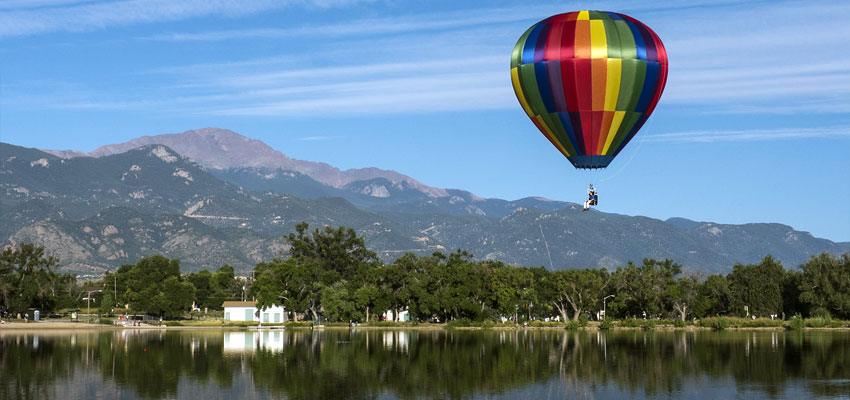
Known as: Colorado Springs recreation hub
Prospect Lake was formed in land donated by General William Jackson Palmer’s Colorado Springs Company in 1887. Prospect Dam was built and the resulting lake provided residents with drinking water and irrigated nearby Evergreen Cemetery.
Prospect Lake is now part of Memorial Park, a community park that memorializes veterans who have been killed in the line of duty.
Boating and fishing are popular here, as well as just sunbathing and hanging out on Prospect Park Beach with a lovely view of Pikes Peak and foothills.
The lake is regularly stocked with rainbow trout, and channel catfish, crappie, bluegill, saugeye, wipers, shad, and yellow perch are all available to fish
Also, the Colorado Balloon Classic has been held here in Memorial Park since 1977.
Essential Information
Location: El Paso County, CO
Activities: Swimming, boating, kayaking, canoeing, fishing, paddleboarding, picnicking, hiking, biking
Main access: Memorial Park
Nearby services and amenities: Boat ramps, picnic amenities, restrooms, hiking trail, biking trail, indoor and outdoor pools, baseball field, basketball court, football field, skate park, playground
Where to stay: Resorts, hotels, cottages, cabins, campgrounds, RV parks
Nearby places of interest: Pikes Peak, Garden of the Gods, Cave of the Winds Mountain Park, Colorado Springs Pioneers Museum, Old Colorado City, The Broadmoor Seven Falls
Best time to visit: March to May (perfect temperatures), September to October (cool temperature, fall foliage)
More information:
Memorial Park | Colorado Springs Official Site
Memorial Park | Visit Colorado Springs
Reservoirs in Colorado
Essentially, reservoirs are manmade lakes where water is stored. They’re usually formed when a dam is built across a river or some other natural body of water.
The main purposes for reservoirs are to create a water supply, generate hydroelectric power, control two-way waterflow, or to provide recreational sites to nearby residents.
These are some of the best reservoirs in Colorado to visit for a weekend or longer.
8. Blue Mesa Reservoir
Known as: The largest body of water in Colorado
This reservoir was built when Blue Mesa Dam was built in Gunnison River in 1966 for generating hydroelectric power.
Today, Blue Mesa Reservoir is part of the Curecanti National Recreation Area and is famous for its serene blue waters, immense rock formations, and astounding 360-degree mountain views.
Boating is popular here, with kayakers and canoers exploring the many-fingered coves and narrow tributaries all throughout the reservoir.
Fishing is legendary, as the reservoir is stocked with millions of fish every year, including gold medal and wild trout. It is also home to the largest kokanee salmon fishery in the US.
Essential Information
Location: Gunnison County, CO
Other Activities: Boating, swimming (in select access points), fishing, camping, windsurfing, waterskiing, paddleboarding, hiking, horseback riding, wildlife watching, picnicking
Main access: Bay of Chickens, Dry Creek, Old Highway 50 beach
Nearby services and amenities: Full-service marinas, boat launches, picnic facilities, restaurants
Where to stay: Cabins, campgrounds, RV parks
Nearby places of interest: Morrow Point Reservoir, Crystal Reservoir, Neversink Trail, Black Canyon of the Gunnison National Park, Gunnison National Forest
Best time to visit: June through August
More information:
Curecanti National Recreation Area | US National Park Service
The Blue Mesa
9. Chatfield Reservoir
Known as: Denver’s favorite recreational reservoir
Chatfield Reservoir was formed when Chatfield Dam was constructed on the South Platte River by the U.S. Army Corps of Engineers in 1975. The primary purpose was to control the recurring flooding in the Denver area.
Eventually, this reservoir became Denver residents’ favorite recreational spot.
Anglers can fish for walleye, rainbow trout, smallmouth bass, yellow perch, bluegill, green and blue sunfish, and blue and channel catfish.
Wildlife viewers can see coyotes, mule deer, white-tailed deer, from the Chatfield State Park Wildlife Viewing Area. You may even see black bears and mountain lions, but sightings of these are quite rare. Meanwhile, birdwatchers can see up to 212 bird species, including songbirds, waterfowl, and birds of prey.
Perhaps an unusual activity you can do here that you don’t see a lot is going hot-air ballooning. You can either go for a ride with one of the pilots in the state park, or if you’re a licensed hot-air balloon pilot, contact the state park office in advance to get a permit to launch from here.
Nearby Littleton, CO offers plenty of accommodations aside from camping, as well as plenty of places to visit.
Essential Information
Location: Douglas and Jefferson Counties, CO
Activities: Summer: Boating, fishing, water skiing, kayaking, canoeing, paddleboarding, horseback riding, birdwatching, wildlife viewing, hiking, camping, hot-air ballooning, volleyball | Winter: ice fishing, sledding, cross-country skiing
Main access: Chatfield State Park
Nearby services and amenities: Marina, boat launches, stables, floating restaurant, restrooms, hiking trails, biking trails, volleyball courts, fire pit
Where to stay: Hotels, motels, inns, campgrounds, RV parks
Nearby places of interest: Denver Botanical Gardens, Roxborough State Park, Waterton Canyon Recreation Area
Best time to visit: June to August
More information:
- Chatfield State Park | Colorado Parks & Wildlife
- Chatfield Dam and Lake | US Army Corps of Engineers
10. Horsetooth Reservoir
Known as: One of the largest recreational areas in northern Colorado.
Horsetooth Reservoir was formed in 1949 when four dams were built on the Colorado River: Horsetooth Dam, Soldier Canyon Dam, Dixon Canyon Dam, and Spring Canyon Dam.
Horsetooth Reservoir supplies water to homes, farms, and businesses, as well as serves as a recreational site.
This reservoir is popular for the surrounding red rock formations, as well as its hidden coves and bays, which are explored through canoes or kayaks. Keep an eye out for wildlife on the shoreline, such as deer, mountain goats, moose, and sometimes even bears.
Fishing is another popular activity, with walleye, smallmouth and largemouth bass, bluegill, crappie, perch, and trout all available to catch.
The nearby historic town of Fort Collins provides accommodations and other amenities, as well as retail, culinary, historical, and cultural activities.
Essential Information
Location: Larimer County, CO
Activities: Swimming (only on specified swim beaches), fishing, boating, camping, picnicking, water skiing, windsurfing, paddleboarding, scuba diving, rock climbing, horseback riding, biking, hiking, wildlife watching
Main access: South Bay Day Use Area and Swim Beach
Nearby services and amenities: Marina, boat launches, hiking trails, biking trails, picnic amenities, showers, restrooms, stables, restaurants
Where to stay: Lodges, condos, bed and breakfasts, cabins, campgrounds, RV parks
Nearby places of interest: Horsetooth Reservoir County Park, Horsetooth Rock, Dixon Reservoir, Soderberg Open Space, Cache la Poudre River Canyon, Lory State Park
Best time to visit: April to September
More information:
Visit one of these lakes in Colorado soon!
Of the 1,500+ lakes in Colorado, these 10 are some of the most well-known, scenic, and unique ones. Hopefully, I’ve inspired you to plan a mountain town vacation.
Which one of these lakes in Colorado would you like to visit first? Did we miss a lake that should have been on this list? Share your thoughts with us in the comments!

